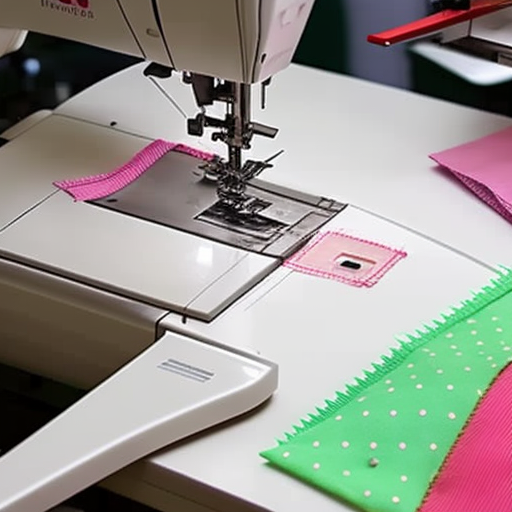 sewing machine” />
sewing machine” />
Welcome to our comprehensive guide on machine sewing techniques. Whether you are a beginner or an experienced seamstress, mastering these techniques will enhance your sewing projects and boost your creativity. Let’s dive in and explore the art of machine sewing!
1. Threading the Machine
The first step in machine sewing is threading the machine correctly. Refer to your machine’s manual for specific instructions. Typically, you’ll need to follow a sequence of threading paths and ensure the thread passes through various tension disks and thread guides. Proper threading guarantees smooth stitching and prevents thread breakage.
2. Adjusting Stitch Length and Width
Understanding how to adjust stitch length and width is crucial for achieving different sewing effects. For general sewing, a stitch length of around 2.5mm works well. However, if you need stronger seams, a longer stitch length may be suitable. Additionally, experiment with stitch width settings to create decorative stitches or to accommodate thicker fabrics.
3. Sewing Straight Lines and Curves
One of the fundamental skills every sewist should master is sewing straight lines. To maintain a straight line, guide the fabric gently without pulling or pushing it. For sewing curves and corners, practice pivoting the fabric while keeping the needle in the down position. This technique ensures crisp and professional-looking corners.
4. Backstitching and Securing Seams
To reinforce the start and end of your stitching, always remember to backstitch. Backstitching involves sewing a few stitches in reverse at the beginning and end of a seam, securing the stitches in place. This technique prevents unraveling and adds strength to your seams.
5. Using Different Presser Feet
Discover the versatility of your machine by experimenting with various presser feet. Different feet are designed for specific sewing tasks, such as inserting zippers, sewing buttons, or creating rolled hems. Refer to your machine’s manual to understand each presser foot’s purpose and get the most out of your sewing machine.
6. Handling Thick Fabrics
When sewing with thick fabrics, such as denim or upholstery material, you might encounter some challenges. To ease the process, use a heavier needle and select a longer stitch length. Adjust the machine’s tension to accommodate the fabric’s thickness, and consider using a walking foot attachment for more even fabric feeding.
7. Finishing Techniques
To achieve clean and professional finishes on your garments or projects, learn different finishing techniques. These may include techniques like serging, zigzag stitching, or using bias tape. Properly finishing your seams prevents fraying and adds a polished touch to your creations.
8. Maintenance and Troubleshooting
Maintaining your sewing machine regularly ensures its smooth performance and longevity. Clean the machine after each project, oil it as recommended by the manufacturer, and have it serviced annually. Familiarize yourself with common troubleshooting techniques, such as resolving tension issues or tangled threads, to save time and frustration during your sewing sessions.
Now that you are equipped with these essential machine sewing techniques, grab your favorite fabric, fire up your sewing machine, and let your creativity soar! Happy sewing!




